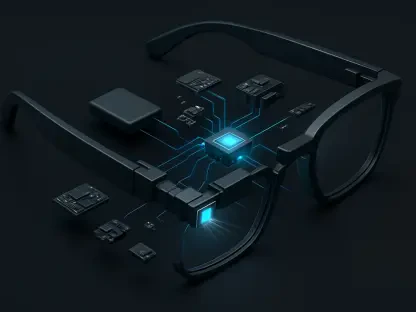The advent of RISC-V, an open-source instruction set architecture (ISA), is poised to transform the landscape of personal computing. Historically, proprietary ISAs like x86 and Arm have dominated the market, embedding secret blueprints in computers and keeping the hardware and software interaction closed to external modification. The introduction of RISC-V promises to break this mold, enabling the purchase of fully customizable laptops by 2025. These laptops will offer both hardware and software modification capabilities, making computing increasingly personal and flexible.
The Essence of RISC-V
Open-Source Nature and Its Impact
RISC-V’s open-source nature sets it apart from other ISAs like x86 and Arm. By allowing anyone to use, modify, and implement RISC-V without licensing fees, it provides a fertile ground for innovation and customization. Its development started in 2010 at the University of California, Berkeley’s Parallel Computing Laboratory, based on the established reduced instruction set computer (RISC) principles. Since its inception, it has found use in various specialized applications, including inexpensive chip designs by companies such as Alibaba and Western Digital. These precedents set the stage for its introduction to mainstream consumer devices.
From its inception, the RISC-V architecture has fostered a collaborative development environment where academic and industrial contributors can push the boundaries of computing without the constraints typically imposed by proprietary technologies. This openness has led to a proliferation of specialized designs, each tailored to specific needs and applications. By removing the costly barrier of licensing fees, RISC-V has democratized hardware innovation, allowing a diverse range of organizations to experiment and innovate. Consequently, this open-source approach not only reduces costs but also accelerates the timeline for bringing new technologies to market, ensuring rapid advancements in computing power and energy efficiency.
Framework’s Vision for RISC-V Laptops
One major thrust towards mainstream adoption is spearheaded by Framework, led by CEO Nirav Patel. The company is working on releasing a laptop that supports a RISC-V mainboard by 2025, targeting early adopters and developers initially. Their plan is to ensure that the RISC-V laptop maintains the same user experience as their current x86-powered models, making it accessible and familiar to users. Framework’s mission is to revolutionize consumer electronics by creating modular, user-repairable laptops that users can upgrade and maintain indefinitely. This aligns well with the ethos of the RISC-V movement.
Framework’s approach centers on the belief that users should have the ultimate control over their devices, from the ability to repair and upgrade hardware components to having greater freedom in choosing and modifying the software they run. This philosophy resonates strongly with the open-source community, which values transparency and user empowerment. By initially courting early adopters and developers, Framework aims to build a robust ecosystem of applications and support that will entice a broader audience over time. Success in this endeavor could significantly shift consumer expectations and demand towards more customizable and sustainable computing solutions.
Early Milestones and Challenges
DeepComputing’s Pioneering Efforts
The progress of RISC-V in consumer electronics is also marked by DeepComputing, which produced the world’s first RISC-V laptop, Roma, in 2023, followed by the DC-Roma II in 2024. These devices came pre-installed with the Ubuntu operating system, ready for basic computing tasks straight out of the box. Despite initial supply-chain disruptions due to the COVID pandemic, the project marked a significant step forward for open-source hardware. The release of these laptops showcased the practical feasibility of RISC-V in consumer-grade products, setting a precedent for future developments.
DeepComputing’s early ventures into the RISC-V laptop space were critical in demonstrating the viability of the architecture for everyday use. The release of the DC-Roma series provided valuable insights into the challenges and opportunities associated with RISC-V hardware. These early models served as important testbeds for identifying and addressing performance bottlenecks, software compatibility issues, and user experience improvements. As a result, they not only contributed to refining the subsequent iterations of RISC-V laptops but also helped build a nascent community of users and developers invested in the success of open-source hardware.
Performance and Cost Considerations
The broader adoption of RISC-V hinges on bridging the current performance gap between RISC-V and its more established counterparts, x86 and Arm. According to Yuning Liang, DeepComputing’s founder, the performance of the current RISC-V chips lags behind, drawing criticism from reviewers. To address this, DeepComputing plans to release the DC-Roma III in 2025, enhancing CPU performance while still using 12-nanometer processors. The goal is to close the performance gap to make RISC-V-based laptops more competitive and appealing to a broader consumer base. This endeavor involves technical advancements and collaborations with semiconductor manufacturers to optimize design and production processes.
Addressing the performance gap is only one part of the equation; cost-effectiveness is equally crucial for mainstream adoption. The DC-Roma II, for example, was priced at around $600, comparable to mid-range Windows laptops but offered performance levels typically associated with budget devices due to its limited production volume. DeepComputing aims to scale up production, potentially lowering costs through economies of scale, thereby making RISC-V laptops more competitively priced. This strategy is essential to attract a wider audience, including consumers who prioritize both performance and affordability in their purchasing decisions.
The Road Ahead for RISC-V
Scaling Production and Reducing Costs
Another aspect that could drive the acceptance of RISC-V laptops is their cost. The DC-Roma II, priced at around $600, is comparable to mid-range Windows laptops. However, because of its lower production volume, its performance aligns more with budget laptops. DeepComputing aims to scale up production, potentially lowering costs through economies of scale and making RISC-V laptops more competitive. This effort involves not only improving manufacturing efficiency but also securing investments and partnerships to support the increased demand. By achieving these goals, RISC-V laptops can become a viable option for a more diverse range of consumers.
Increasing production volumes and reducing costs also impact the entire supply chain, from component sourcing to assembly. Streamlining these processes requires close collaboration with suppliers and continual optimization of manufacturing techniques. Moreover, expanding the production base can stimulate further technological advancements and refinements in RISC-V architecture, leading to better performance and lower power consumption. As production scales up, the RISC-V ecosystem will benefit from a broader selection of compatible peripherals and accessories, enhancing the overall user experience and solidifying the architecture’s position in the market.
Expanding Beyond Consumer Laptops
The potential for RISC-V extends beyond just consumer laptops. Companies like Ventana are working on high-performance data-center chips using the RISC-V architecture. Balaji Baktha, Ventana’s CEO, emphasizes that the potential for high performance is not limited by the ISA but by the implementation of the microarchitecture. This perspective underscores the flexibility and power of RISC-V as a platform for a wide range of applications. By adapting RISC-V for data-center environments, Ventana aims to leverage its open-source nature to create highly efficient and scalable solutions, addressing the growing demand for computational power in enterprise and research settings.
Ventana’s efforts to develop RISC-V-based data-center chips highlight the versatility and scalability of the architecture. These advancements could pave the way for broader adoption of RISC-V across various sectors, from cloud computing to artificial intelligence and machine learning. The open-source nature of RISC-V also fosters a collaborative approach to innovation, where multiple organizations can contribute to and benefit from shared advancements. This ecosystem of shared knowledge and resources can accelerate the development of specialized applications, fostering a more diverse and dynamic technological landscape that benefits a wide range of industries and use cases.
Broader Implications and Future Prospects
Democratizing Hardware Innovation
The broader implications of RISC-V’s adoption include lowering the barriers to entry for innovation in hardware design. By making the foundational aspects of computing open and accessible, RISC-V could democratize the field, allowing even students to design and build their own chips. This openness and flexibility could lead to a new era of personalized and purpose-built computing devices, aligning with the broader trends towards customization and user empowerment in technology. Educational institutions could integrate RISC-V into their curricula, fostering a new generation of hardware engineers who are adept at open-source principles and practices.
As more individuals and small-scale developers gain access to the tools and knowledge needed to create custom hardware, the potential for unique and innovative applications will expand. This shift could lead to the development of niche products tailored to specific needs that might otherwise remain unaddressed by larger manufacturers. Moreover, the widespread adoption of RISC-V could inspire a culture of experimentation and collaboration, mirroring the dynamics seen in open-source software development. By lowering the entry barriers, RISC-V not only democratizes hardware innovation but also cultivates a more inclusive and diverse tech ecosystem.
Challenges and Opportunities
RISC-V, an open-source instruction set architecture (ISA), is set to revolutionize personal computing. Historically, the market has been dominated by proprietary ISAs like x86 and Arm. These ISAs keep their designs secret, preventing users from modifying how the hardware and software interact. In contrast, RISC-V offers a fresh perspective by making its blueprint open to everyone. This shift promises to change how computers are built and used. By 2025, we can expect to see laptops that are completely customizable, both in terms of hardware and software. This means users will have unprecedented control over their devices, tailoring them to meet specific needs and preferences. This level of customization was previously impossible due to the closed nature of traditional ISAs. The impact on personal computing will be profound, offering flexibility and personalization like never before. This transformation heralds a new era where users are no longer at the mercy of proprietary constraints but can fully engage with and modify their computing experience.









